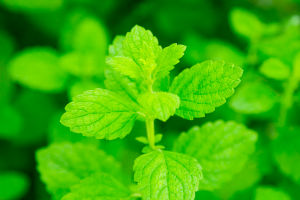As the temperature drops, our plants face a big seasonal challenge: surviving the cold. Some species handle it well, while others can suffer or even die if not cared for properly.
Whether we have delicate potted plants indoors or hardy shrubs outside, winter care is key to helping them thrive year-round.
Understanding Plants' Winter Needs
First, it helps to know that plants respond to cold differently based on their type and origin:
• Tropical plants (like ferns or orchids) are sensitive to cold and should stay indoors.
• Hardy outdoor plants (like roses or hydrangeas) can handle some frost but still benefit from extra care.
• Succulents and certain cacti need special attention, as some types cannot tolerate freezing.
By identifying what kind of plants we have, we can better tailor our winter care routine.
Indoor Plant Protection Tips
When we bring plants indoors, we might think they are safe—but winter conditions inside homes can be tricky too. Here's what we can do:
• Move them away from cold windows — Even double-glazed windows can get icy. Keep plants at least 20–30 cm away from window glass.
• Provide enough light — Shorter days mean less sunlight. If possible, place plants where they can get maximum natural light, or use a grow light.
• Control humidity — Indoor heating makes air dry. Mist plants with water regularly or place a water tray nearby to maintain humidity.
• Adjust watering — Plants grow slower in winter, so they need less water. Let the topsoil dry before watering again.
• Avoid drafts — Keep plants away from heaters, radiators, and drafty doors.
Outdoor Plant Protection Tips
Outdoor plants face the full force of winter weather. Here's how we can help them stay safe:
• Mulch the soil — Adding a layer of mulch (such as bark or leaves) protects roots from freezing and helps retain warmth.
• Wrap vulnerable plants — For sensitive shrubs or small trees, wrap them loosely with breathable fabric like horticultural fleece. Avoid plastic, which traps moisture.
• Water before a freeze — Moist soil holds heat better than dry soil. Watering before a frost helps insulate roots.
• Move pots to sheltered spots — Potted plants are more exposed to cold. Place them close to walls, under eaves, or in a greenhouse.
• Elevate pots — Raise containers off the ground using pot feet to prevent waterlogging and root rot.
When and How to Prepare
Timing is everything. We should start preparing plants when night temperatures consistently fall below 10°C (50°F). Here's a simple checklist:
• September–October — Gradually reduce watering for outdoor plants to encourage dormancy.
• Late October–November — Move tender plants indoors or cover outdoor ones before the first hard frost.
• Throughout winter — Check for signs of stress (yellow leaves, dry soil) and adjust care accordingly.
Expert Advice on Winter Plant Care
According to Dr. Eleanor Vance, a specialist in plant stress physiology and environmental adaptation:
"Gradual acclimatization to winter conditions—termed 'cold hardening'—is physiologically superior to abrupt environmental shifts. This process leverages incremental temperature drops and photoperiod changes to up regulate cryoprotective compounds."
According to Dr. Eleanor Vance, a specialist in plant eco-physiology and stress mitigation:
"Strategic mulching combined with precision moisture management forms the cornerstone of winter plant protection. This dual approach buffers root zones against thermal extremes while optimizing soil hydration—critical for preventing cellular dehydration during freeze-thaw cycles."
Common Mistakes to Avoid
To help our plants truly thrive, here are a few things we should not do:
• Don't overwater indoor plants in winter.
• Don't cover plants with airtight materials like plastic.
• Don't leave tender potted plants unprotected outdoors.
• Don't forget about ventilation—airflow matters even in winter.
Expert Advice on Winter Plant Care
According to Dr. Eleanor Vance, a specialist in plant stress physiology and environmental adaptation:
"Gradual acclimatization to winter conditions—termed 'cold hardening'—is physiologically superior to abrupt environmental shifts. This process leverages incremental temperature drops and photoperiod changes to up regulate cryoprotective compounds."
Research from the University of Minnesota Extension suggests that mulching and proper watering are two of the most effective methods for preventing winter damage in both ornamental and edible plants.
Common Mistakes to Avoid
To help our plants truly thrive, here are a few things we should not do:
• Don't overwater indoor plants in winter.
• Don't cover plants with airtight materials like plastic.
• Don't leave tender potted plants unprotected outdoors.
• Don't forget about ventilation—airflow matters even in winter.
Let's Give Our Plants the Best Chance!
Winter can be tough on plants, but with a little preparation and care, we can help them not just survive—but flourish when spring returns. Whether it's adding mulch, moving pots, or giving indoor plants some extra love, every small step makes a difference.
What about you, Lykkers? Have you tried any special techniques to protect your plants in winter? We'd love to hear your tips and stories. Let's share ideas and keep our homes and gardens green and joyful all year long!

